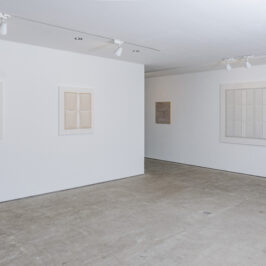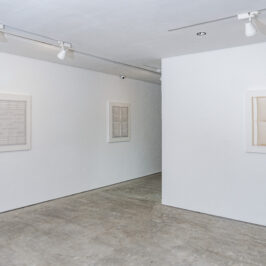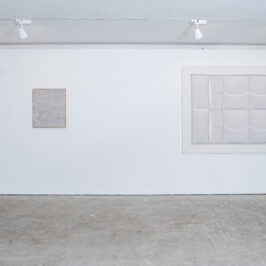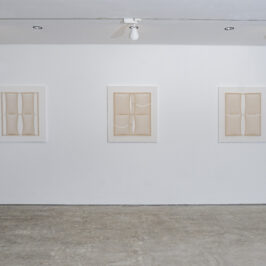marina weffort_ from the curve, the straight line
24 may - 02 ago_ 2025
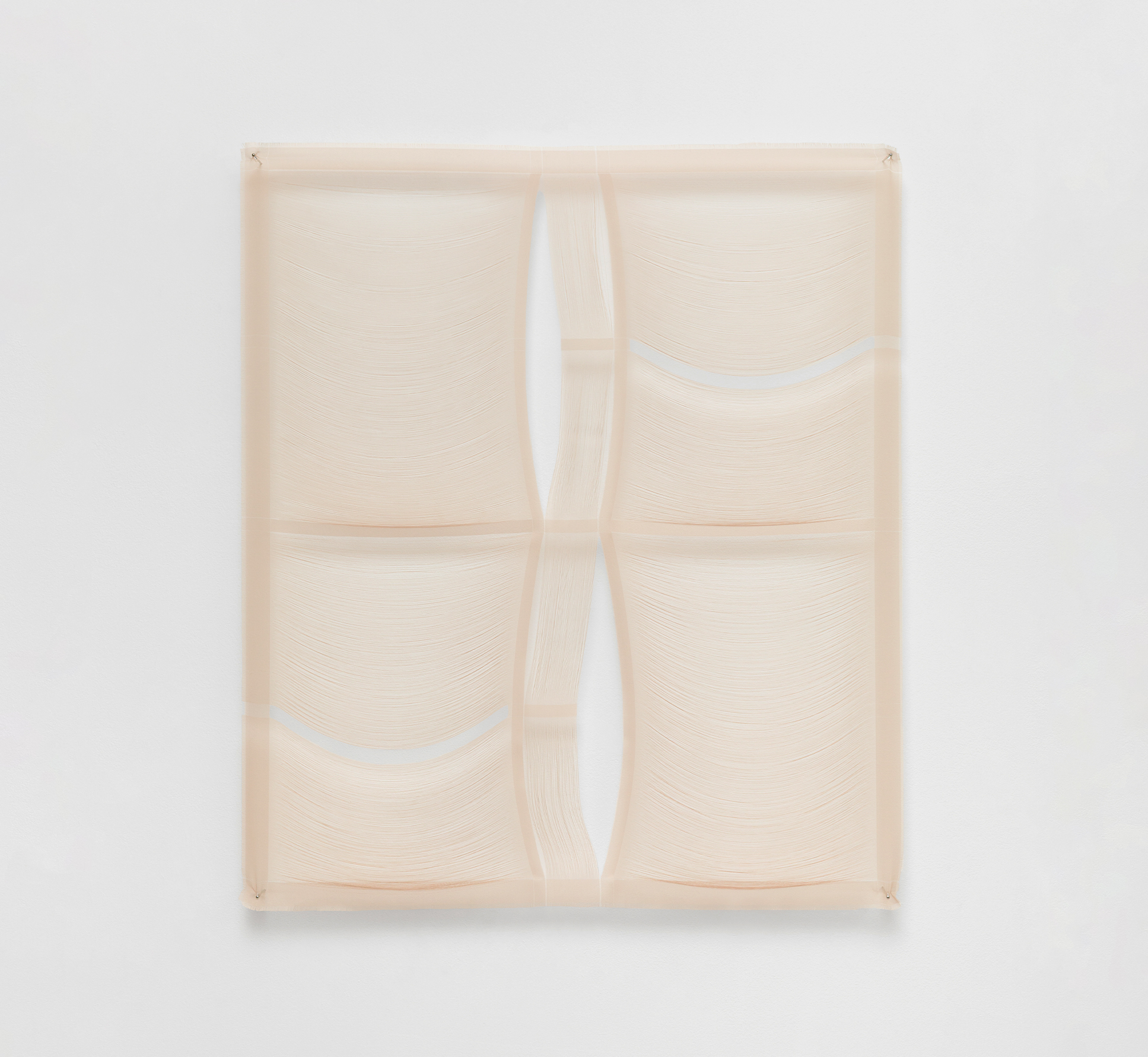
from the curve, the straight line
Ana Avelar
Marina Weffort encounters fabric as both medium and language, inverting the structural rigidity of the Brazilian constructive tradition. By unraveling it thread by thread, she reveals the memory embedded in the material and proposes resistance through flexibility. Her gesture of pulling and releasing threads gives rise to delicate, mobile, and sensitive structures — like flags in the wind or breathing skins.
Though sensorially attuned to touch and vision, her work demands discipline and rigor. The artist draws, cuts, and patiently dismantles the fabric, creating edges, contours, and geometries with near-surgical precision. Her practice values emptiness, impermanence, and non-verbal emotional expression, seeking stillness and awareness through repetition — a repetition that is active, intentional, and charged with meaning.
Within the lineage of textile traditions associated with women’s labor, Weffort echoes figures like Anni Albers, who, after the Bauhaus, questioned the place of tapestry within the visual arts. Albers regarded thread as a living material — part of a greater, vibrant, and continuous whole. Weffort works in the opposite direction of the weaver: instead of weaving, she unweaves, producing through subtraction and revealing new modes of construction. She gestures toward the residues of the textile industry, transforming mass-consumption materials into works that eternalize sensation. In doing so, she explores the line as a threshold between rigidity and fluidity, control and chance.
Her work floats between drawing and sculpture. The unraveled fabric becomes a soft relief, evoking stone through its palette of subtle beiges and greys. In parallel, her drawing-painting-print hybrids — made with plaster and graphite on canvas — are executed with flowing, rhythmic, rapid gestures. The vibration of the lines evokes sound waves, as though one could see sound in motion.
These continuous and alternating gestures — between control and spontaneity — create compositions that unfold over time. The repetitive rhythm recalls meditative practices, in which the repetition of a gesture expands the meaning of the work as lived experience — almost like a visual mantra. The act of making becomes a prolonged encounter, a physical dialogue with the material.
Transparency and opacity define her series. Fabrics and reliefs provoke the tactile sense, awakening a desire to touch in an age dominated by screens. There is sensuality in the vibrating threads and in the traces of plaster that oscillate between the visible and the concealed. Like Eva Hesse, Weffort works with industrial materials that take on an organic appearance, exploring seriality, accumulation, and the transformation of the everyday.
Weffort’s poetics are singular, oscillating between hardness and softness, logic and intuition. Her work meditates on the meanings of flexibility as strength and resistance. In contrast, rigidity is associated with authoritarianism and fear of change. Resonant with Buddhist proverbs, her practice suggests that true strength lies in adaptability. Like bamboo that bends without breaking, her art invites reflection on resilience, gentleness, and transformation — a force that does not impose, but endures.


